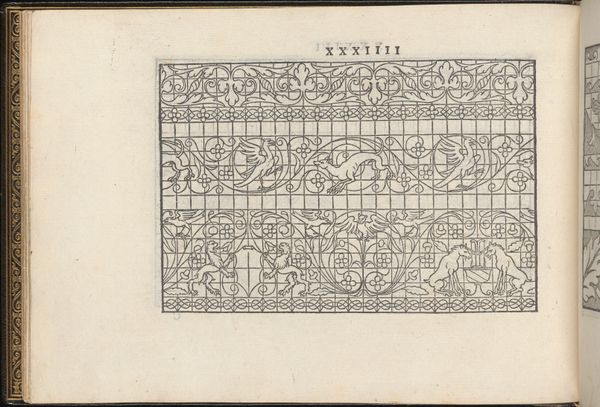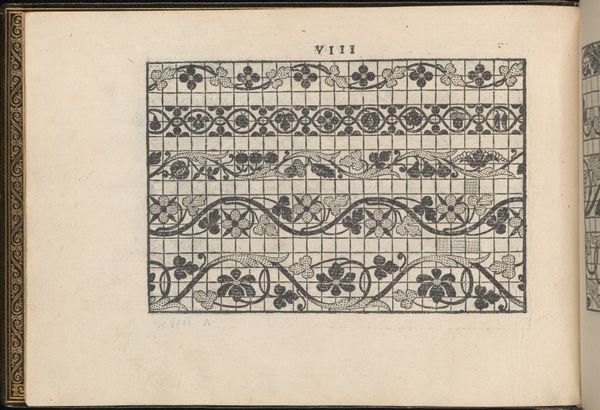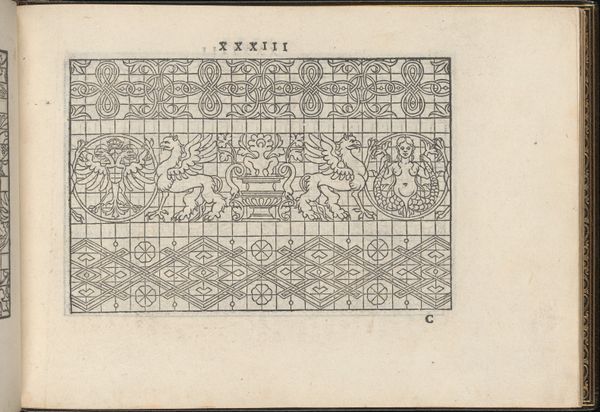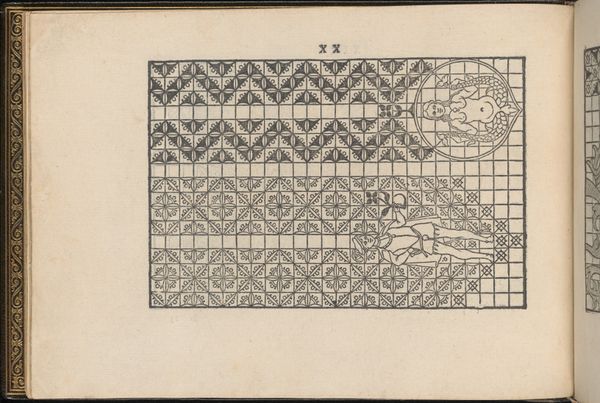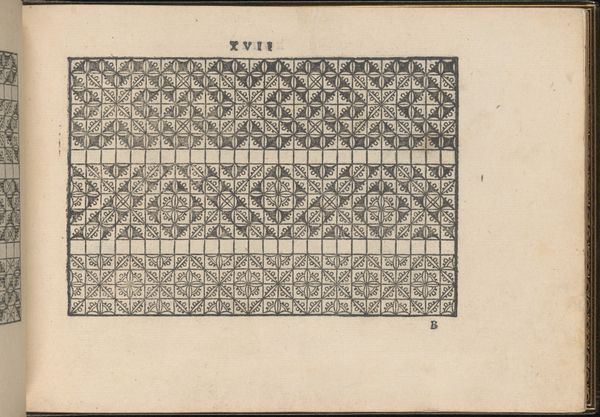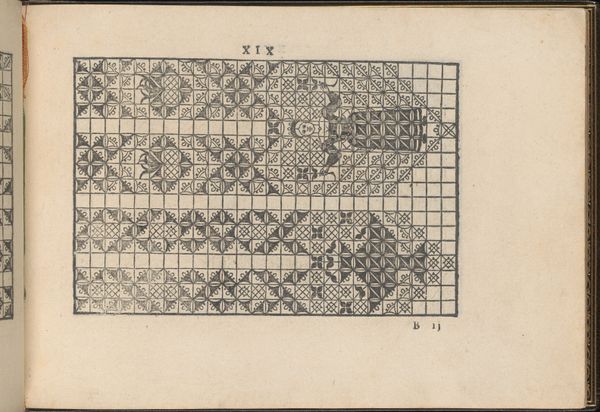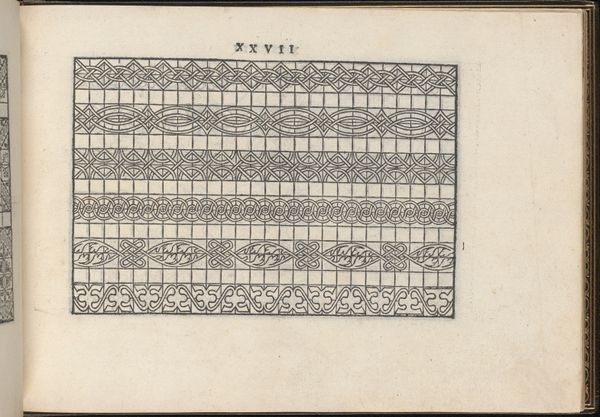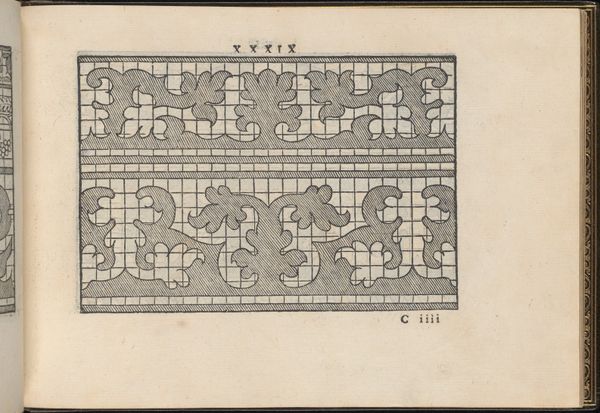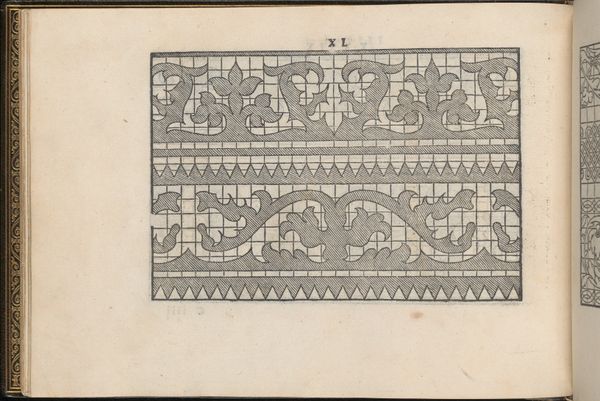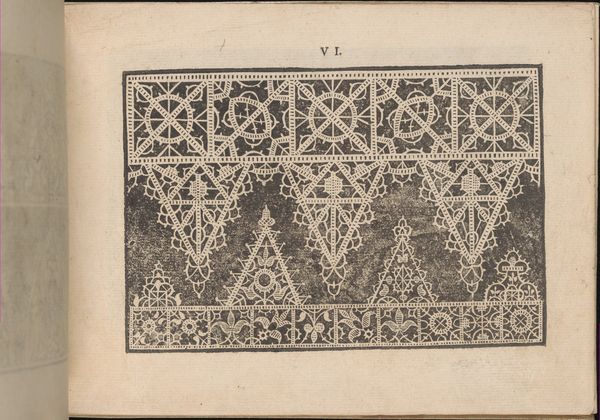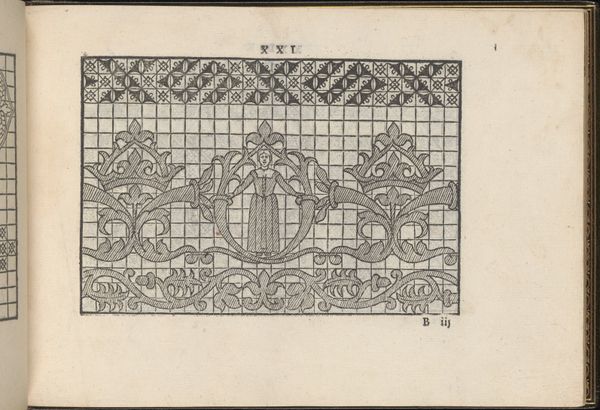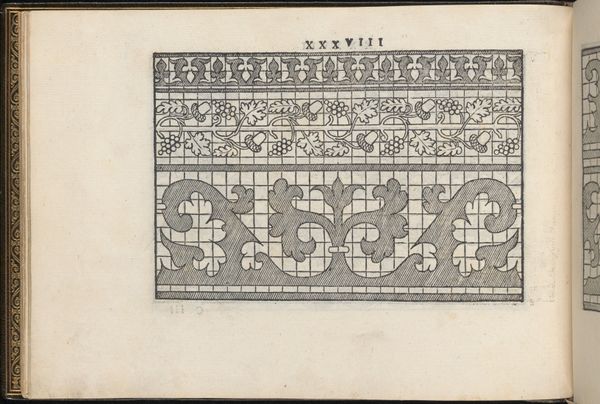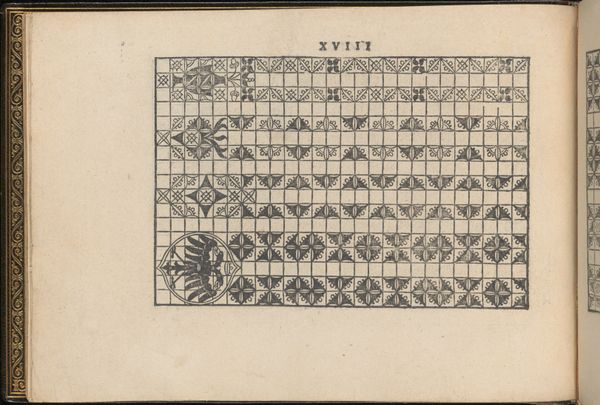
La Vera Perfettione del Disegno di varie sorti di recami, page 4 (recto) 1567
0:00
0:00
drawing, graphic-art, print, paper, ink, engraving
#
drawing
#
graphic-art
# print
#
paper
#
11_renaissance
#
ink
#
decorative-art
#
italian-renaissance
#
engraving
Dimensions: Overall: 6 5/16 x 8 7/16 in. (16 x 21.5 cm)
Copyright: Public Domain
Editor: Here we have a page from "La Vera Perfettione del Disegno di varie sorti di recami," created in 1567 by Giovanni Ostaus. It's an engraving printed on paper, a series of decorative embroidery patterns really. There’s something almost mathematical about its rigid structure, yet also so delicate and ornate in the details of each pattern. What strikes you about it? Curator: Oh, absolutely. I'm transported. You know, gazing at this, I can almost smell the beeswax polish of a 16th-century artisan's workshop. The grid reminds me of a musical staff—each line of embroidery, a different melody. It's like a glimpse into the domestic arts of the Renaissance, where practicality intertwined so beautifully with artistry. The engraving captures this delicate dance, doesn't it? Have you ever considered how something so functional can also be such a visual poem? Editor: I hadn't really thought of it as a poem, but I like that. So, this was like, a pattern book? Curator: Precisely! A manual for creating beauty. Imagine a woman using these patterns to embellish clothing or household linens. She's not just decorating fabric; she's imbuing it with stories, family histories, perhaps even a little rebellion against the expected. Think of the act of creation itself as a form of quiet resistance, or subtle self-expression! Editor: So, more than just pretty patterns, these were tools for personal expression? I never thought about it that way. Curator: Art often resides in the everyday, don’t you think? These designs, though seemingly simple, carried the hopes, dreams, and identities of those who stitched them into existence. I think, by engaging with this image, we stitch ourselves into a longer, human narrative. Editor: I agree, it’s almost as if by observing them, we become a small part of history ourselves, connecting the past and present through observation. Thanks, that gives me a new way of thinking about it.
Comments
No comments
Be the first to comment and join the conversation on the ultimate creative platform.
